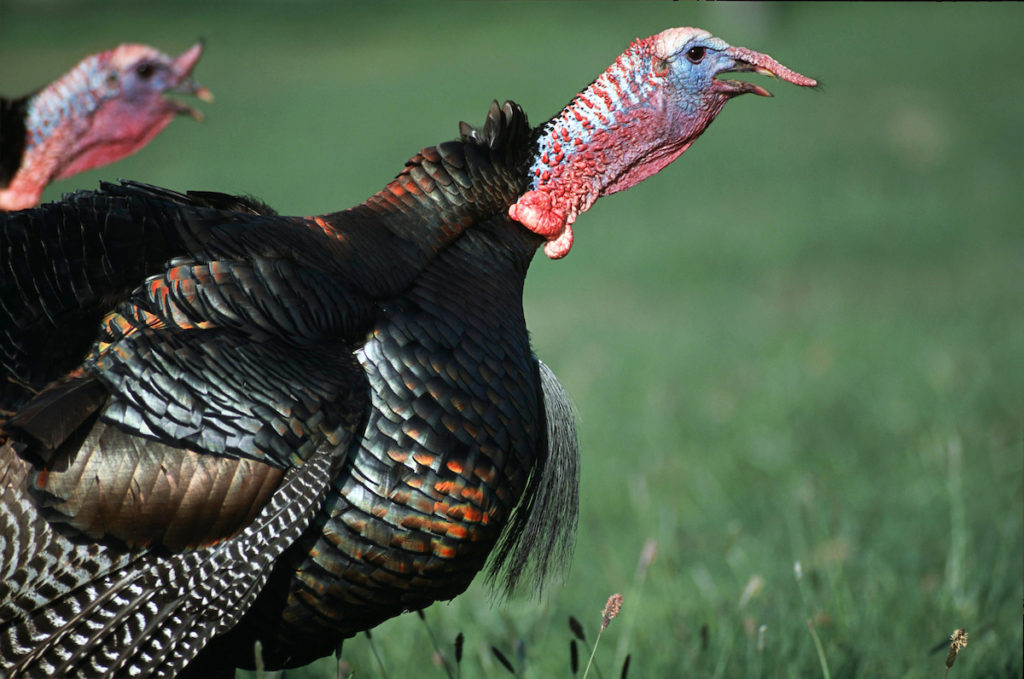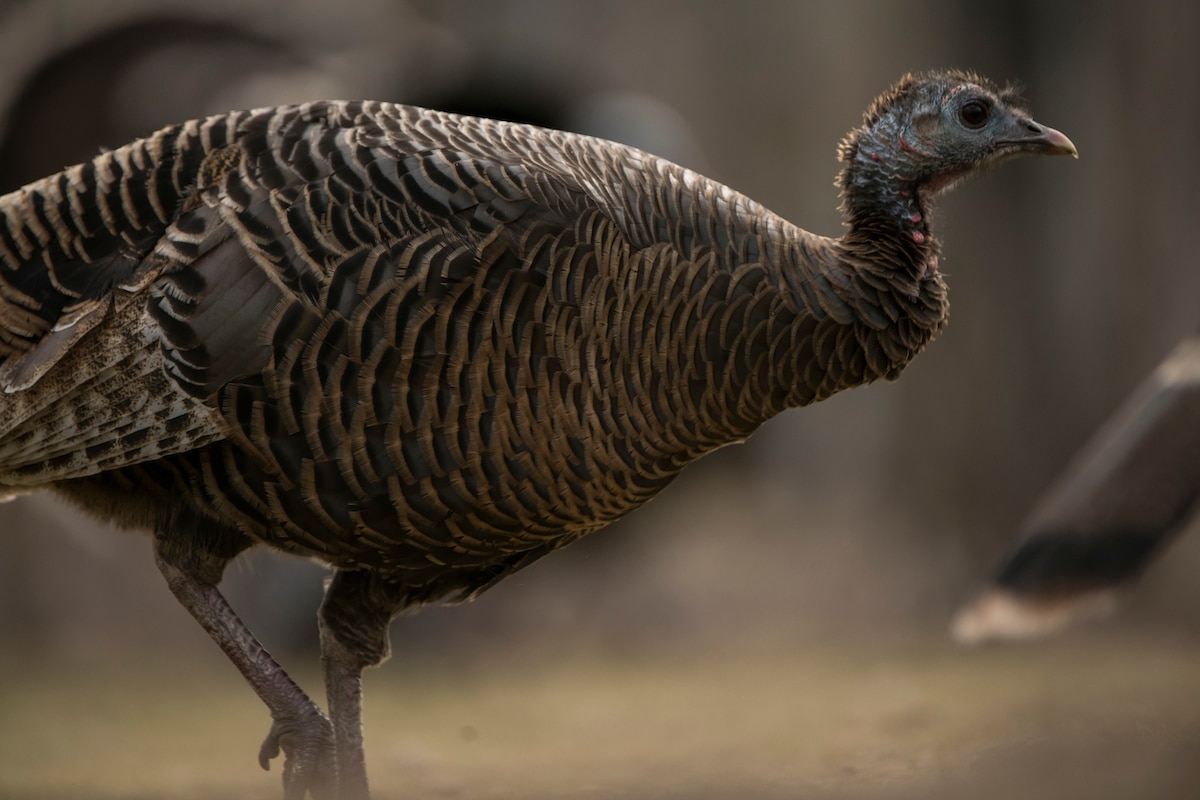Wild turkeys are interesting creatures with unique physical characteristics like the beard and spurs. If you’ve wondered about the makeup and purpose of beards and spurs, keep reading. You’ll soon find answers.

Male turkeys, called gobblers – and some female turkeys, called hens – have beards. Only about 10 to 20 percent of hens grow beards, and it’s likely a genetic mutation. Photo Credit: John Hafner
If you’ve seen a male wild turkey, you likely noticed a shock of long, dark, fibrous bristles hanging from its breast plumage. That’s called a beard, and it’s made of modified feathers. Male turkeys, called gobblers – and some female turkeys, called hens – have beards. Only about 10 to 20 percent of hens grow beards, and it’s likely a genetic mutation, according to Sciencing.com.
Beard Function
The beard’s function is not known with certainty, but it might influence mate selection by hens. According to the National Wild Turkey Federation’s website, longer beards signify older, healthier males and thus superior mates.
Beard Length
Beards begin growing when turkeys are about 5 months old, and keep growing 4 to 5 inches annually. According to Turkey & Turkey Hunting magazine, a 2-year-old gobbler’s beard usually measures 8 to 10 inches. When it’s 3 years old, a gobbler’s beard will have grown about 14 inches. However, few toms have beards that long because bristles wear off at the tip as the beard grows.
But not all beards break or wear off. In a recent Realtree.com article by Steve Hickoff, Top 5 Longest Wild Turkey Subspecies Beards, this former NWTF staffer listed the longest beards on record for each turkey subspecies:
– Easterns: 22.5 inches, shot in Bowie, Texas.
– Osceolas: 19.125 inches, shot in Lafayette, Florida.
– Rio Grandes: 15.375 inches, shot in Beckham, Oklahoma.
– Gould’s: 14.0625 inches, shot in Canatlán Durango, Mexico.
– Merriam’s: 13.875 inches, shot in Brown, Nebraska.
On average, Eastern wild turkeys have the longest beards of all subspecies, while the Merriam’s has the shortest.
Number of Beards
Turkeys can also sport more than one beard. The NWTF’s Wild Turkey Records show Tyler Blake Mumpower shot an Eastern turkey with 13 beards in Spring 2017 in Pennsylvania; and Kooper Bays shot an Eastern turkey with 10 beards in 2015 in Missouri. It’s far more common, however, to bag birds with two or three beards.

Older, more dominant birds have the longest and sharpest spurs, which helps them fend off younger turkeys when vying for breeding rights. Photo Credit: John Hafner
A spur is a long talon or claw on the back of a turkey’s leg, about 2 inches above the foot. Spurs are made of smooth, shiny keratin, and range in color from black, gray or pink. Some spurs even look pearlescent, while others are tipped with dark tones, according to Hickoff’s Realtree.com article, Turkey Spurs are Like Antlers to a Deer Hunter.
The Spur’s Function
Spurs help gobblers establish dominance, according to the NWTF’s website. Older, more dominant birds have the longest and sharpest spurs, which helps them fend off younger turkeys when vying for breeding rights.
Spur Length
Both sexes are born with small button spurs, but the spur keeps growing after birth in males. Turkeys with spurs less than a half-inch long are likely 1-year-old jakes, while turkeys with spurs measuring a half-inch to 1 inch are typically 2-year-old gobblers. Spurs on 2-year-olds tend to have blunt tips. After age 2, spurs grow slowly. Gobblers 3 or older wield sharp, curved spurs that are slightly hooked.
Although spur length and sharpness can help hunters estimate a turkey’s age, they’re not sure bets. Like beards, spurs can break or wear down. The Wild Turkey Zone website reports that Osceolas usually have the longest spurs of the five American subspecies, mostly because they generally live in swampy areas with soft dirt. In contrast, Merriam’s turkeys live in rocky, mountainous areas, so their spurs are typically shorter from continuous wear and tear on hard surfaces.
Hunters often consider turkey beards and spurs – no matter their size – as trophies, and collect them as keepsakes or display them with fan mounts. And because many states let hunters shoot bearded hens, beards and spurs often help hunters determine which turkeys are legal targets from afar.
Are you ready to start your own turkey hunting adventures? Prepare for your first turkey hunt by visiting an archery shop to pick up the necessary gear and supplies.